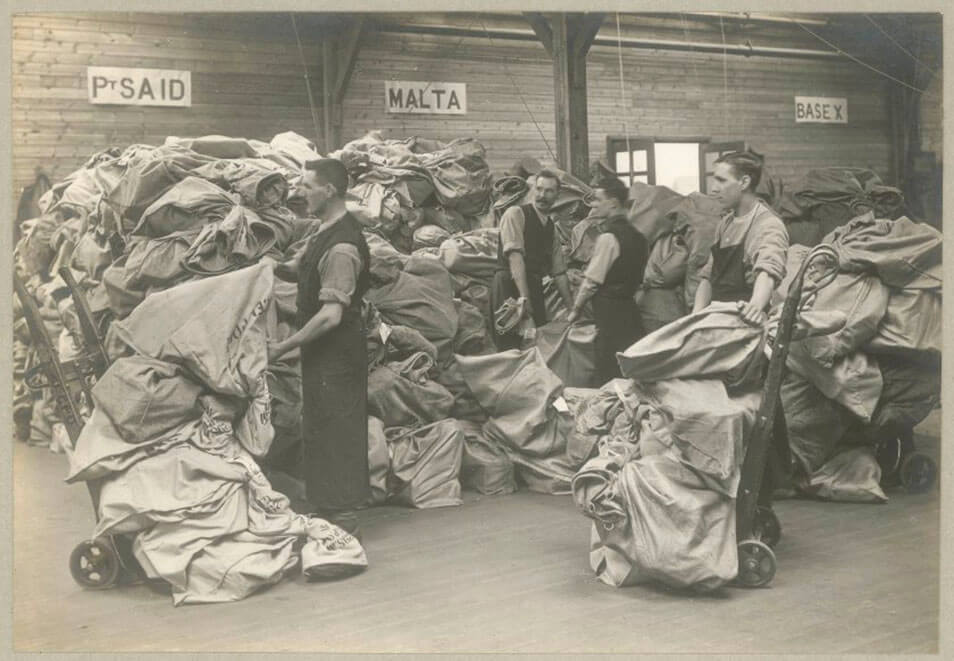News Article The Post Office and the First World War
Find out how Royal Mail played a significant role in the First World War as part of the General Post Office (GPO).

On 7th August 1914, the first members of the British Expeditionary Force (BEF) landed in France. Over the next four years the Royal Mail played a significant role in the First World War as part of the General Post Office (GPO).
As well as maintaining the postal service at home, Post Office workers were involved in the fighting on the Western Front, the distribution of recruitment forms for men to enlist, and the safe delivery of letters to soldiers in the trenches.
By the end of the war the Post Office had released 75,000 of their own staff to fight. Moreover, the GPO had its own regiment, the Post Office Rifles (POR), which comprised of roughly 12,000 employees.
The POR infantry regiment fought on the Western Front suffering heavy causalities at both Ypres and the Somme. Of the 12,000 General Post Office employees enlisted in the Post Office Rifles, 1,800 were killed and 4,500 wounded.
The Post Office delivered mail to all theatres of war, including ships, and even to prisoners of war. Moreover, the service was highly efficient - on average it took only two days for a letter to reach its intended recipient on the Western Front.
The Army Postal Service (APS) was responsible for delivering mail from the established base depots in France - such as Le Havre, Boulogne and Calais - to the front.
Trench warfare meant that British positions on the Western Front remained fairly static, allowing the APS to establish a comprehensive network of vehicles which delivered letters and parcels. By the end of the First World War, the Home Depot had processed a staggering 2 billion letters and 114 million parcels.
In order to process the large amounts of mail bound for the Western Front, the London Home Depot employed over 2,500 staff - the majority being women - to work at the purpose-built wooden building which occupied five acres of Regents Park.
With nearly a quarter of the Post Office workforce enlisted with the army, the GPO employed thousands of temporary workers to address the shortage of labour, including 35,000 women in the first two years of the war.
Another wartime initiative involved thousands of bilingual women who were employed by the War Office to work on postal and telegraphic censorship. With the assistance of the Post Office, these women helped the government to control the dissemination of military information, and to compile data which influenced the outcome of the war.
Across Britain, the number of rural deliveries was reduced due to the mobilisation of the Post Office workforce, but also in order to conserve fuel. For example, a rural town which received up to twelve deliveries per day in 1913 experienced a reduced daily service of one or two deliveries. Moreover, the First World War signalled the demise of the famous Penny Post which had been the standard national postage rate for 75 years. In order to raise extra revenue, the government raised the standard price of postage by half a penny in June 1918.
Clearly, the Post Office’s contribution to the war effort was hugely significant. On both the Western Front and Home Front, postal workers were able to maintain vital lines of written communication.
These regular deliveries of letters and parcels between the soldiers and home maintained morale and provided a semblance of normality in an otherwise brutal and unforgiving landscape.
For millions, the ultimate sacrifice was made, including those originally employed by the Post Office, who were willing to face the formidable challenges of war.
Lest we forget.



